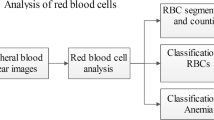Abstract
Since 1983, prenatal diagnosis of Menkes disease has been carried out by determining Cu in samples of chorionic villi from the fetus by means of radiochemical neutron activation analysis. Concentrations of Cu in chorionic villi from male fetuses later confirmed to have Menkes disease were invariably higher than previously reported values for normal controls. Out of 240 samples analyzed in the period 1983–1998, there were 71 from female fetuses that could be carriers of the Menkes genetic defect without suffering from the disease. Increased concentrations of Cu in these samples could not be attributed to the presence of this genetic defect, but might result from sporadic contamination of the samples before analysis. Such contamination also may occur in samples from male fetuses and thus raise the level of Cu in small, but normal specimens into the range characteristic of Menkes disease. In spite of a strict protocol for taking samples without contamination, a total of four false positives were reported during the period of investigation; no false negatives have occurred.
Similar content being viewed by others
References
K. Heydorn, Trace elements and human disease, inNeutron Activation Analysis for Clinical Trace Element Research, Vol. 2, CRC, Boca Raton, FL, pp. 131–155 (1984).
T. TØnnesen, N. Horn, F. SØndergaard, M. Mikkelsen, J. Boué, E. Damsgaard, et al., Measurement of copper in chorionic villi for first-trimester diagnosis of Menkes dis- ease,Lancet i, 1038–1039 (1985).
K. Heydorn, Analytical techniques and quality control in biomedical trace element research,J. Trace Element Exp. Med. 7, 33–38 (1994).
N. Horn, F. SØndergaard, E. Damsgaard, and K. Heydorn, Prenatal diagnosis of Menkes syndrome by direct copper analysis of trophoblastic tissue, inFirst Trimester Fetal Diagnosis, M. Fraccaro, G. Simoni, and B. Brambati, eds., Springer-Verlag, Berlin, pp. 251–255 (1985).
E. Damsgaard, K. Heydorn, and N. Horn, Trace elements in the placenta of normal foetuses and male foetuses with Menkes disease determined by neutron activation analysis, inTrace Element—AnalyticalChemistry in Medicine and Biology, Vol. 2, de Gruyter, Berlin, pp. 499–516 (1983).
Author information
Authors and Affiliations
Rights and permissions
About this article
Cite this article
Heydorn, K., Damsgaard, E. & Horn, N. Accumulated experience with prenatal diagnosis of menkes disease by neutron activation analysis of chorionic villi specimens. Biol Trace Elem Res 71, 551–561 (1999). https://doi.org/10.1007/BF02784243
Issue Date:
DOI: https://doi.org/10.1007/BF02784243




